THE HISTORY OF

GT Enters the Fray
By the time the team had demonstrated the game to Gates, Unreal didn't have a chance of becoming a Microsoft product. That honor had already been bestowed on GT Interactive, who signed a multimillion dollar deal for the game in mid-1996. Based on Epic's huge investment in Unreal - self-funding it for over a year and a half - signing a publishing deal was a necessary step toward finishing the game. "At some point we probably would have run out of money to develop Unreal had we not signed a deal," says Rein. "It was a huge project - our biggest ever in terms of time, money, and human resources."
Just how did GTI get the rights to Unreal? In mid-1996, Jim Perkins, then president of software publisher FormGen, visited Rein at his house outside of Toronto, Ontario, and saw Unreal. (FormGen was later acquired by GT Interactive, and Perkins now serves as senior VP, artists and repertoire.) Perkins recalls, "The Unreal game system and editor totally blew me away - it was gorgeous and well ahead of anything I'd seen before in terms of beauty, speed, and ease-of-use." Remembering when he first demonstrated the product to Perkins, Rein says, "He told me point blank, 'We really want this game, and we are going to give you the best deal you can get.' That was on a Monday, and on Wednesday, we signed a tentative deal with them for Unreal. "Although the deal was quickly closed, Rein recalls that, "We actually had one publisher offer us more money than GT for Unreal, but we were more comfortable working with GT - it owned the genre at that time with games like Doom, Quake, Duke Nukem 3D, and even Spear of Destiny." At GT Interactive, chairman and CEO Ron Chaimowitz first saw Unreal back in 1996. "Based on the engine and Epic's vision, I believed it had triple A potential," he explains. "The graphics, expertise of the team, and the promise to have an editor by which anyone could easily design their own levels appealed to GT." So the deal was struck for Unreal, even though the game had just barely begun hard-core development. As Chaimowitz said - the vision was there, but now that vision had to be made into a reality. | 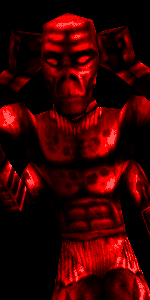 |
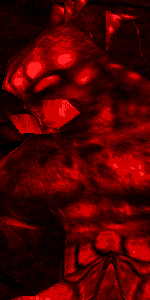 | Virtual Development
Gradually, the Unreal team had grown from the core group of three in Rockville, MD, to what eventually totaled a dozen-plus developers spread out all over the world. While Sweeney worked on the engine and editor in Maryland, Bleszinski designed levels from his home base in California, and Schmalz worked with his team at Digital Extremes on art, design, and scripting in Canada. The level designers and technical specialists were even more spread out on the globe - some from places as far away as the Netherlands. Although this "virtual development" team worked well together, its face-to-face contact was extremely limited. For instance, Dave Carter, the Chicago-based lead animator for Unreal, was hired completely over the Internet on the strength of a single animation demo. "Believe it or not," Schmalz remembers, "I didn't meet Dave [in person] until we had worked together for two straight years."
While the concept of creating a topnotch, blockbuster game with a virtual development team was appealing to Epic and Digital Extremes, it would prove onerous once the project kicked into full gear. "At the start, it wasn't too bad because we all did our separate things," says Schmalz. "But once the team really built up - during the last year or so of development - we realized that the coordination was too hard with more than a dozen people working at different locations around the globe. When I'd be going to bed in Canada, someone in Europe would just be waking up." |
Third Time's a Charm
Almost inevitably, progress on the game began to slow. The virtual development scheme was a primary culprit, but other factors also contributed to Unreal's now-legendary delays. As previously mentioned, the fragile work of designing a game based on an unfinished piece of technology was cumbersome and time-consuming. "It's truly the toughest thing for a developer to do," says Rein. "How do you design a monster for a level that isn't even in the game yet?" asks Bleszinski. "It was very frustrating, but also a learning process for everyone involved."
This learning process would lead to much wasted effort. A perfect example was the team's work to create rich visual textures for the levels, similar to the Riven-esque environment it had originally envisioned. "We started off by just taking digital pictures of textures such as rock and stone and using them, but we were pretty wrong about that working," recalls Bleszinski. "We ended up using those as a base but had to do lots of modifications to them so they would look good in the engine." In the end, over 5,000 textures were created for the game. Only about half of them were ever used. The high standards of the Epic team would also cause delays. "The rule was that only the coolest stuff gets in," says Bleszinski. "If there was a creature that wasn't as good as some of the other ones, it was out. Theoretically, we could have made two or three games out of all the content we created. We just wanted the best stuff in there."
Finally, the game's technical innovations took longer than expected to complete, particularly the scripted, in-game cut-scenes that would eventually produce Unreal's spookiest moments. These dramatic interludes - such as the early level scene where the lights suddenly cut out, the music changes, and Skaarj warriors leap from the darkness and attack the bewildered player - are what truly separates Unreal from its competition. "[This type of] drama is really tough to do," says Bleszinski, "because you have to account for all the possibilities. For instance, if a Nali Alien is scripted to get killed by a Skaarj, you must account for all the possibilities - what if the player goes and stands between them, or what if he kills the Nali before the Skaarj gets to him? I think everyone underestimates how difficult it is to program those elements into a game." | 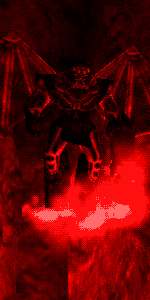 |
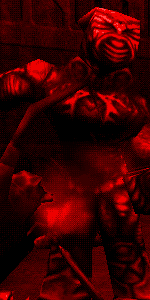 | The Pressure Mounts
Not surprisingly, publisher GT Interactive was growing increasingly concerned about the game's long development cycle. The software publishing giant had risked a great deal of money on Unreal, and the pressure was mounting for Epic to stay on a schedule. As Bleszinski remembers, "[They] wanted me to give them a time estimate for how long it would take to create a map from start to finish - they wanted to chart it all out for us. But it's not that easy. A painter can't tell you how long it is going to take him to do a painting, and designing levels for Unreal is a lot more than just throwing ten enemies in a room and asking the player to mow them down." Although GT's Ron Chaimowitz is now mum on the subject of delays, he agrees that "any time a title takes longer than anticipated to complete, there are frustrations." According to the entire Epic team, GT was extremely supportive of its decision to continue working on the game until it was the product it envisioned - or at least close to it. Sweeney sums it up by stating, "We took lots of heat for our release date slips, which totaled over a year, but ultimately gamers are happier having a good game late rather than a bad game on time." |
A Victim of Exaggeration?
Even though the missed released dates were much-discussed in the industry (Wired magazine officially dubbed it "vaporware"), Rein is quick to point out that rumors of Unreal's delay have been greatly exaggerated. "Unreal turned into a kind of urban myth. People think we worked on it for four years, and that isn't true; People think that we were two years late, and that isn't true either."
The truth is that when GT signed the deal for Unreal, Sweeney was happy to guarantee a ship date of April 1997. But as we now know, April came and went without Unreal. With the game already more than two months late, the Unreal team showed up at the 1997 Electronic Entertainment Expo to exhibit Unreal in GT Interactive's booth. Most of the attendees expected the game to be nearly finished. It wasn't. As Bleszinski remembers, "After E3 last year, we took a lot of heat. People started to doubt the team and wondered what was happening with the game. We looked at the online coverage, and the press had a lot of valid points. We didn't show very much artificial intelligence, and the levels looked too much like mazes and didn't have anything memorable in them. We took that feedback to heart." The simple reality was that Unreal was not yet ready for prime time. As Bleszinski puts it, "If we had made our original ship date, Unreal wouldn't be the cool game it is today." | 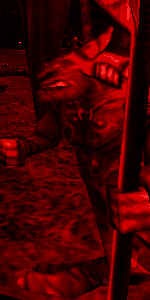 |
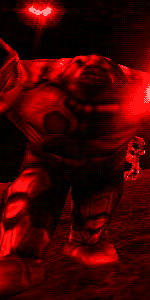 | The Maple Leaf Convergence
Flash back to April, 1997. With the first release date having come and gone, it was decided that the developers must work together in the same office. So, from France, California, Alabama, the Netherlands, and a host of other locales, the entire Unreal development team packed up and moved. They boarded planes destined for Toronto, Canada, and reassembled at the Waterloo, Ontario, offices of Digital Extremes. It was an unexpected move for most of the developers - after all, they planned to be finished by this time. Little did they know that almost a year would pass before they would return home.
The move was tough but inevitable. "Unreal was a learning experience for Epic, and they came to realize that virtual offices don't work," says Chaimowitz. "In the final stages of creating any product, teams must be tightly synchronized. Having all the contributors together benefited the final development process." Although the team agreed that the convergence was the best thing for the game, it wasn't the best thing for their personal lives. Bleszinski felt the move to Canada, coupled with the missed release dates, was a doubly hard blow. "It was really difficult to keep setting these dates for release and then not make the deadline. We were displaced up in Canada, so we'd call back to our friends and say, 'Don't worry, just a few more weeks guys!' The reality of it was that we weren't just a few more weeks away and we kept missing our release dates time and again." The dynamics of the move to Canada were intensified by the fact that despite having worked together for years, many of the developers had never met face-to-face. Suddenly, e-mail pals were physically sitting beside each other, working on a game that was late and under past-deadline pressure to be released. "Maybe it helped that we had to relocate everyone because we were sacrificing ourselves to be together with the team," suggests Rein. "We knew we had something special, and we didn't want to lose that."
Although the team would go out and play the occasional game of pool or basketball - it even went paintballing once - working 80-odd hours a week didn't leave much time for socializing. The pressure was on, and as Schmalz recalls, "It was basically work, sleep, and more work for the whole year." But would they do it again? Bleszinski thinks so. "I hate to say it, but I would do it all again if this much was at stake." |
The Scalpel Comes Out
Tensions remained high in Canada as the developers worked around the clock with flaky technology and the high standard of cutting any element that didn't live up to its maximum potential. It was at this point that the team members decided their initial vision for the game was simply too grand. The Unreal universe was a vast playground of indoor and outdoor settings, but it was unrealistically expansive. "We realized that the game was far too big - it would take too long to play," Mark Rein recollects. "So, we trimmed levels and decided to concentrate on the 30-odd levels that we wanted to put in the game. It's no different than a movie editor who has to cut down a movie to a certain amount of time. We had to focus the game to get it done."
So, out came the digital scissors. Entire levels were scrapped only months before completion, and various creatures were axed as well, including a fire-breathing dragon. What started out as a Minotaur was refined to the point that it morphed into the sleek Krall creature. And a pterodactyl-esque monster was cut from the game because it just didn't live up to the "cool" standard established by the developers. Deep Internet Roots
All the content cutting and scrapping of so much hard work was discouraging. But from day one, a huge Internet fan base believed in Unreal and helped the team to maintain faith in its project when things got tough. Two Unreal fan sites on the Internet, Unreal.org and UnrealNation, constantly supported the title and tracked it throughout its development. "They believed in what we were doing," says Bleszinski. "Whenever the team was a little doubtful, we visited some of the online chatrooms and tons of people would pump us up and tell us how they are really looking forward to playing the game. These fan pages are an amazing phenomenon, and to be honest, a great morale booster for development teams." | 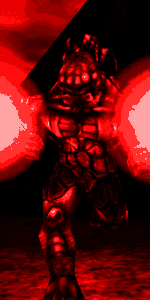 |
 | Reality on the Horizon
As 1998 began, the end of the development process was finally in sight. The technology was stable, and the content was starting to meet the standards of "coolness" set forth by the Unreal team. And for its part, GT Interactive - despite having waited a year beyond the original release date - continued to support the team's effort. "GT was very patient with us, and they knew Unreal was worth doing right. They saw constant improvement in the game," says Rein. But as the team moved into their ninth month in Canada, exhaustion was setting in. The developers were working seven days a week and considered themselves lucky if they got four or five hours of sleep a night. What kept them going? "We knew we were capable of doing a number one game - we had the tools and the team to do it," remembers Schmalz. "It was within our grasp, and we were approaching it - that's what kept us going."
In early April, a major milestone was reached. Amazingly, it wasn't some new graphics technology or cool editor feature - it was the fact that the developers were now playing Unreal deathmatch more than Quake II. The game was almost finished, and more importantly, it was fun, and everyone was into it. So much so that the Digital Extremes offices in Waterloo were descending into new levels of untidiness. In one corner, roughly 500 cans of Mountain Dew picked up on a spur-of-the-moment supermarket run had been crafted into a real live "mountain of dew" by the team. As development progressed and the caffeine was consumed, this "mountain" grew into an Everest-like mound.
By the time the Computer Game Developers' Conference rolled around in early May, Epic was quietly telling the press that Unreal would hit US shelves by Memorial Day weekend. At the Digital Extremes offices, the final touches were being put in place - the music was synched, the textures were buffed, and the gameplay tweaked. Unreal was at long last becoming a reality. On May 18th, 1998, the task was complete - Unreal was done. It was 6:00 a.m. when the team finally decided that the gold master was finished. They gave it to Mark Rein, who immediately jumped on a plane to Baltimore to hand deliver the gold master for final compatibility tests. Back in Canada, the team couldn't believe the journey was over. "It was a really strange and weird feeling when we finally finished the game," reflects Schmalz. "We sat around for an hour and just said 'Wow, we're done.' Then I pulled out some of the really old stuff - old versions of the editor and the first demo I did with those mechs and the castle, and we said 'Wow, we've come a long way, haven't we?' We laughed. We reminisced, but not for too long - we all wanted to get to bed. It was finally over."
The Unreal team members parted company after one of the most exhausting years of their lives. Bleszinski's flight back to California was scheduled to depart just six short hours after the game was completed. A bit later, the rest of the team members would also leave their Canadian stomping grounds, finally heading back to their homes around the globe. They remember their time together, or as Tim Sweeney put it, they remember the one thing they can - namely, "Work." After everyone left, it took a full two days to clean the Digital Extremes Office. It still smells a little funny today. |
Onward to Part 3
Interested in seeing screenshots from Unreal's beginning?
CLICK HERE







